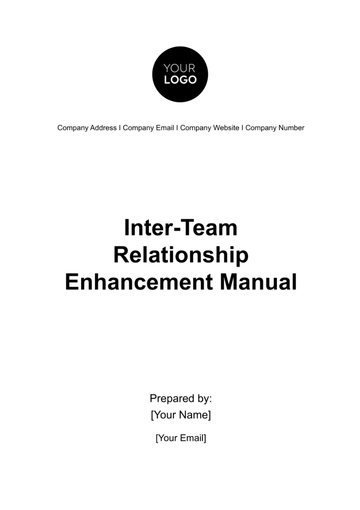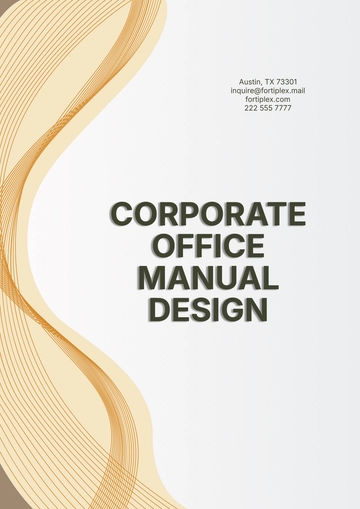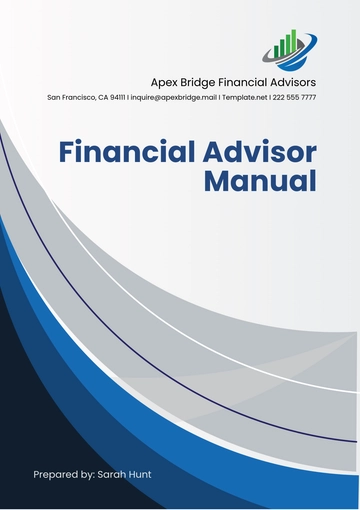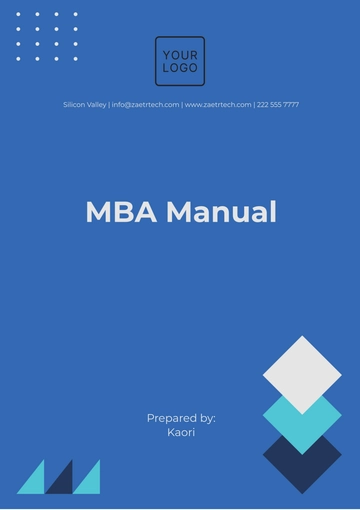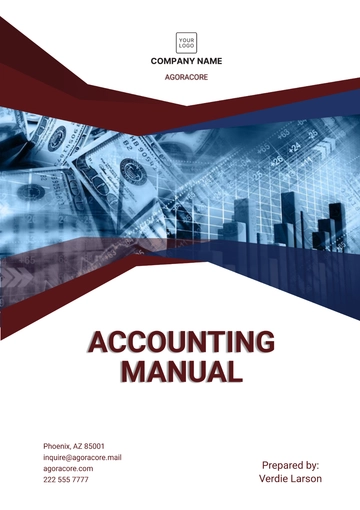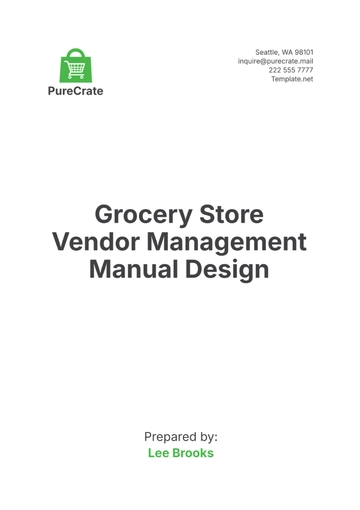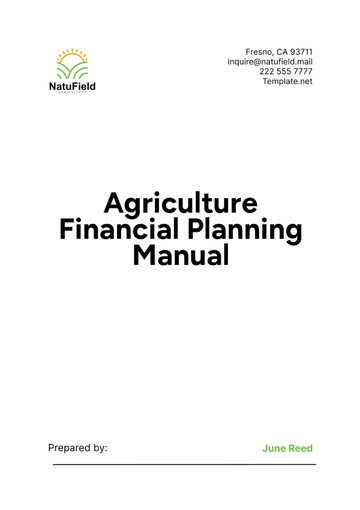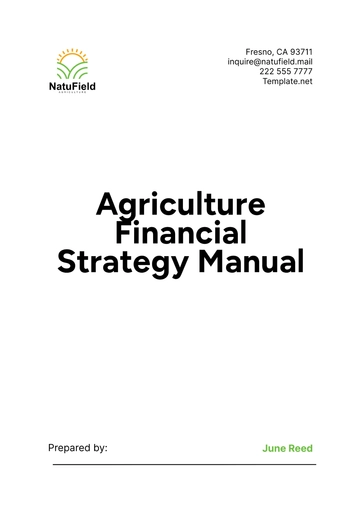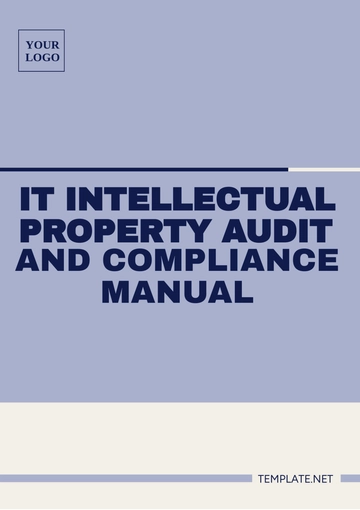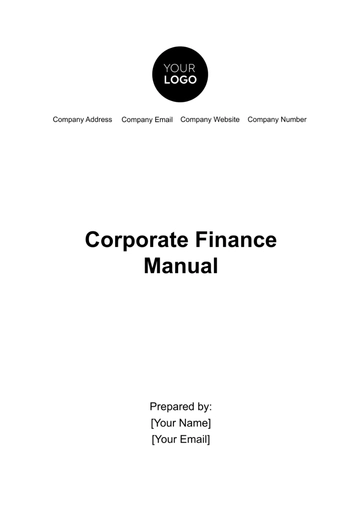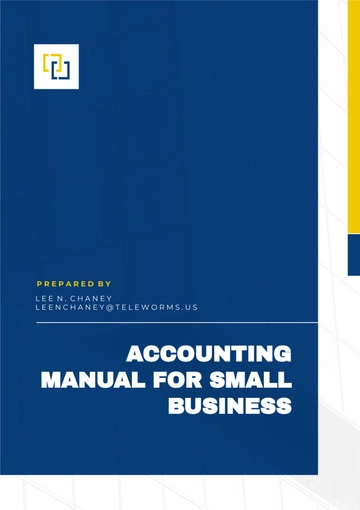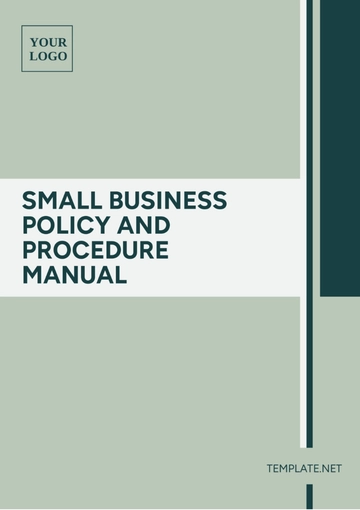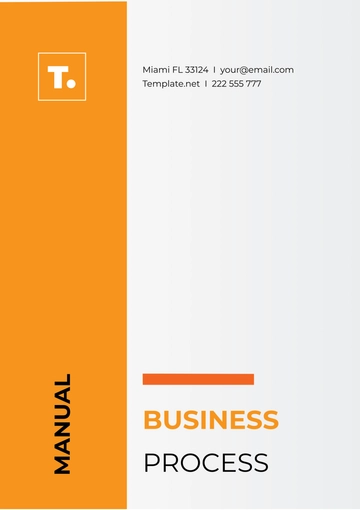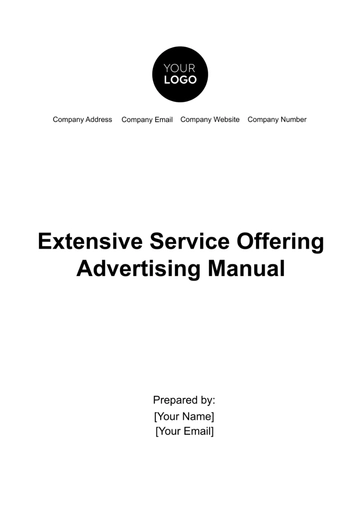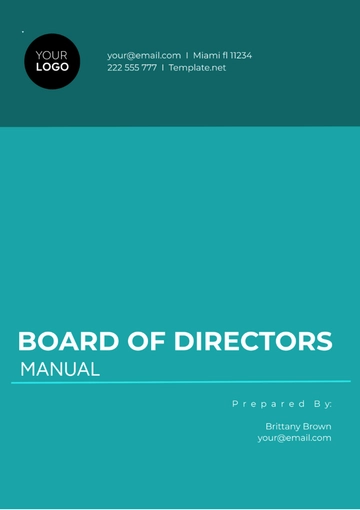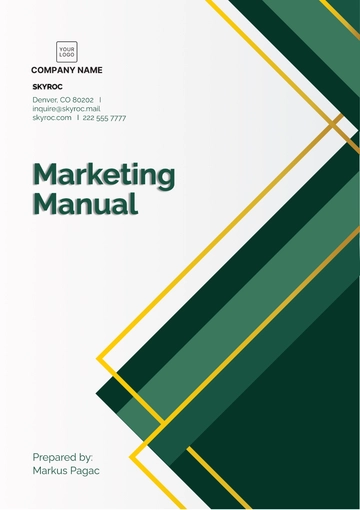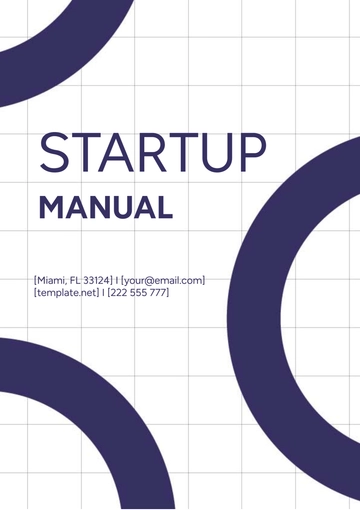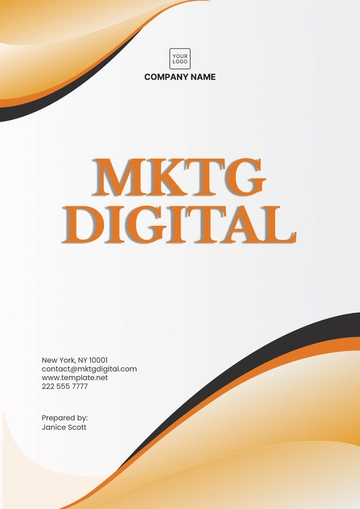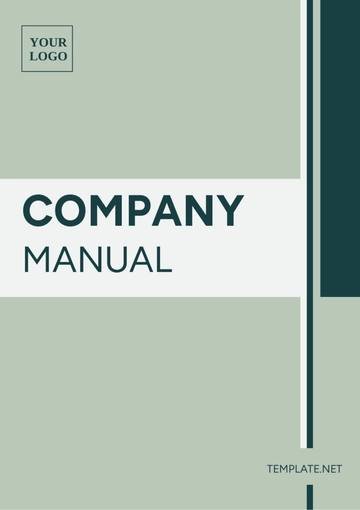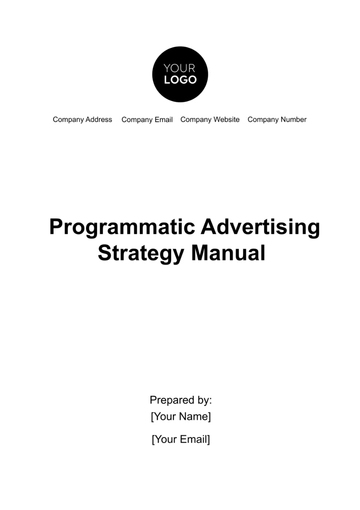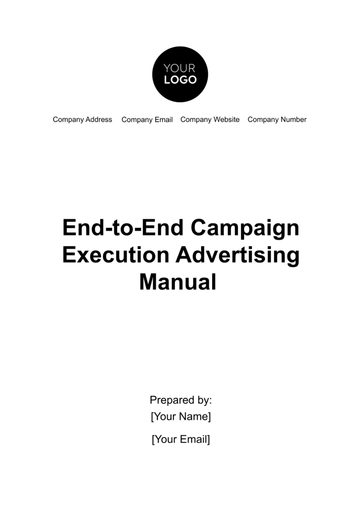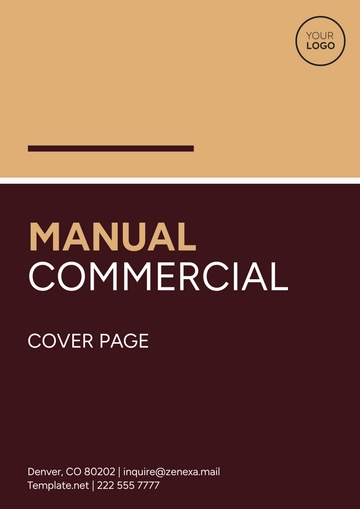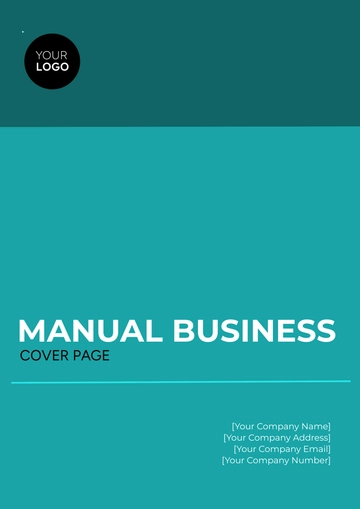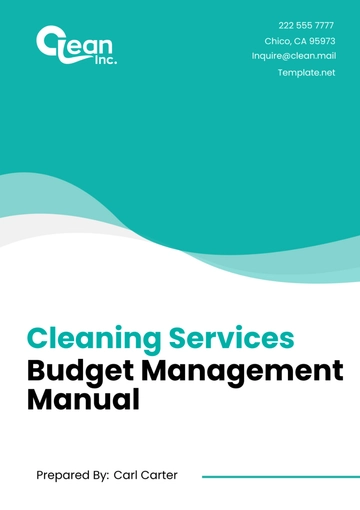Free Finance Control Manual

Introduction to Financial Control
Overview
Financial control is the cornerstone of sound business management and plays a pivotal role in safeguarding the company's assets. It encompasses the strategies, systems, and processes used to manage and monitor the company’s financial resources. The purpose of this manual is to provide a comprehensive guide to our financial control systems, ensuring that all employees understand their roles and responsibilities in maintaining financial integrity and accountability.
Scope and Application
This manual applies to all financial transactions and controls within the company. It is relevant to all departments, including sales, procurement, and human resources, as financial control is a company-wide responsibility. Specific attention is given to areas such as expenditure, revenue generation, asset management, and financial reporting. Adherence to the guidelines in this manual is mandatory for all employees involved in financial operations.
Organizational Structure and Responsibilities
Organizational Structure
The financial department is structured to optimize efficiency and ensure robust control. The Chief Financial Officer (CFO) heads the department, supported by various specialized roles. Below is the organizational chart:
Position | Role Description |
Chief Financial Officer | Oversees all financial operations, sets financial strategy |
Finance Manager | Manages day-to-day financial activities, reports to CFO |
Accountants | Handle accounts, ledgers, and financial record keeping |
Auditors | Conduct internal audits, ensure compliance |
Payroll Officers | Manage employee compensation and benefits |
Procurement Specialists | Oversee purchasing and expenditure |
Responsibilities of Key Personnel
Chief Financial Officer (CFO): Sets the overall financial strategy, ensures financial health, and provides leadership in financial decision-making.
Finance Managers: Oversee the implementation of financial policies and procedures, manage budgeting, and report financial status.
Accountants: Responsible for accurate and timely financial record-keeping, including managing accounts payable and receivable.
Auditors: Ensure adherence to financial regulations and internal policies, conduct regular audits to assess financial controls.
Payroll Officers: Manage all aspects of payroll processing, ensuring accurate and timely employee payments and compliance with tax regulations.
Procurement Specialists: Ensure cost-effective procurement, manage supplier contracts, and monitor expenditure against budgets.
Employees at all levels are expected to familiarize themselves with their specific financial responsibilities as detailed in this manual. Regular training will be provided to ensure all staff are up-to-date with current financial control practices.
Financial Policies and Procedures
General Financial Policies
Our company adheres to a set of fundamental financial policies designed to maintain fiscal discipline and transparency. Key policies include:
Expenditure Policy: All expenses must be approved by the department head and must fall within the allocated budget.
Revenue Recognition Policy: Revenue is recognized in accordance with Generally Accepted Accounting Principles (GAAP), ensuring accuracy in financial reporting.
Asset Management Policy: All company assets, tangible and intangible, are to be recorded and managed to preserve their value.
Specific Financial Procedures
The following table outlines specific financial procedures:
Procedure | Description | Responsible Personnel |
Invoice Processing | Invoices must be verified, approved, and recorded in the accounting system | Accountants |
Expense Reporting | All expenses must be substantiated with receipts and align with the expense policy | Employees, Managers |
Budgeting Process | Annual budgeting involves departmental input, review by finance, and final approval by CFO | Department Heads, Finance Team |
Risk Management
Risk Identification and Assessment
Risk management is integral to our financial control framework. We continually identify and assess various risks, including:
Market Risks: Fluctuations in market conditions affecting investments and revenue.
Credit Risks: Risks associated with extending credit to customers.
Operational Risks: Risks arising from internal processes, people, and systems.
Each department must regularly report potential risks to the finance team for assessment.
Mitigation Strategies
To mitigate these identified risks, we implement the following strategies:
Diversification of Investments: To manage market risks, investments are diversified across different asset classes.
Credit Control Measures: To mitigate credit risk, creditworthiness of new customers is thoroughly assessed.
Regular Audits and Process Reviews: To address operational risks, internal audits are conducted, and processes are regularly reviewed for efficiency and security.
Internal Controls
Control Environment
Our company is committed to maintaining a strong control environment. This involves establishing a culture of accountability and integrity, underpinned by the following elements:
Ethical Standards: All employees are expected to adhere to high ethical standards in their work, as outlined in the company's Code of Conduct.
Control Activities: These include approvals, authorizations, verifications, reconciliations, and reviews of operating performance.
Information and Communication: Timely and relevant information is communicated throughout the organization to enable informed decision-making.
Specific Control Activities
The table below outlines key control activities and their objectives:
Control Activity | Objective | Frequency |
Transaction Authorization | Ensure all transactions are approved by authorized personnel | As transactions occur |
Periodic Reconciliations | Confirm the accuracy and completeness of financial records | Monthly |
Segregation of Duties | Reduce the risk of errors and fraud by dividing responsibilities among different individuals | Ongoing |
Financial Reporting
Reporting Procedures
Our financial reporting procedures are designed to ensure accuracy, completeness, and compliance with applicable standards. These include:
Internal Reporting: Monthly financial reports are generated for management review, providing insight into financial performance and enabling strategic decision-making.
External Reporting: Quarterly and annual reports are prepared in accordance with GAAP/IFRS standards for external stakeholders, such as investors and regulatory bodies.
Compliance and Standards
Adherence to the following standards is critical:
Generally Accepted Accounting Principles (GAAP): For US operations, ensuring consistency and comparability in our financial statements.
International Financial Reporting Standards (IFRS): For international operations, ensuring compliance with global accounting standards.
Compliance with these standards is reviewed regularly, and all accounting personnel receive ongoing training to stay updated on any changes.
Audit and Compliance
Internal Audit
The internal audit function is a cornerstone of our financial control system. It provides independent assurance that the organization's risk management, governance, and internal control processes are operating effectively. Key aspects include:
Audit Plan: Annually, the audit team develops a plan that focuses on areas of highest risk.
Execution of Audits: Audits are conducted throughout the year, based on the approved plan, and may include financial, operational, and compliance audits.
Reporting: Audit findings are reported to management and the audit committee, with recommendations for improvement.
Compliance Checks
To ensure adherence to both internal policies and external regulatory requirements, regular compliance checks are conducted:
Regulatory Compliance: Ensuring all financial practices comply with laws and regulations, such as tax laws and financial reporting standards.
Policy Adherence: Regular reviews are conducted to ensure all departments adhere to internal financial policies and procedures.
Technology and Security
Financial Information Systems
Our company uses advanced financial information systems to manage and report on financial activities. Key components include:
Accounting Software: For managing accounts payable, receivable, and general ledger.
Budgeting and Forecasting Tools: To assist in financial planning and analysis.
Reporting Systems: For generating financial reports and dashboards.
Data Security and Confidentiality
Ensuring the security and confidentiality of financial data is paramount. Our approach includes:
Access Controls: Limiting access to financial systems to authorized personnel only.
Data Encryption: All sensitive financial data is encrypted in transit and at rest.
Regular Security Audits: Conducted to identify and mitigate potential vulnerabilities.
Training and Development
Training Programs
We offer a comprehensive range of training programs designed to enhance the skills and knowledge of our financial personnel. These programs include:
Financial Control Fundamentals: Covering basics of internal controls, risk management, and compliance.
Advanced Financial Reporting: Focused on GAAP/IFRS standards, complex reporting issues, and new regulations.
Ethics and Fraud Prevention: Addressing ethical decision-making, identifying fraud risks, and prevention strategies.
Continuous Professional Development
Our commitment to continuous professional development is reflected in:
Regular Seminars and Workshops: Conducted by internal and external experts on emerging financial trends and challenges.
Professional Certification Support: Support for obtaining certifications like CPA (Certified Public Accountant) or CMA (Certified Management Accountant).
Online Learning Resources: Access to online courses and materials for self-paced learning.
Appendices
Templates and Forms
For ease of use and standardization, the following templates and forms are included:
Template/Form Type | Purpose |
Expense Report Form | For documenting and submitting expenses |
Budget Request Template | To propose and justify budget requests |
Audit Checklist | For internal audits and compliance checks |
Glossary of Terms
A glossary is provided to clarify financial and control-related terms used throughout this manual. A few examples include:
Accrual Accounting: Accounting method that records revenues and expenses when they are incurred, regardless of when cash transactions occur.
Liquidity: A measure of the ease with which an asset can be converted into cash.
Sarbanes-Oxley Act (SOX): A US federal law that sets enhanced standards for all U.S. public company boards, management, and public accounting firms.
- 100% Customizable, free editor
- Access 1 Million+ Templates, photo’s & graphics
- Download or share as a template
- Click and replace photos, graphics, text, backgrounds
- Resize, crop, AI write & more
- Access advanced editor
Strengthen your financial oversight with the Finance Control Manual Template from Template.net. This editable, customizable manual guides the implementation of financial controls within your organization. Essential for preventing errors and fraud, it outlines procedures and checks for managing financial transactions and maintaining the integrity of financial reports.
